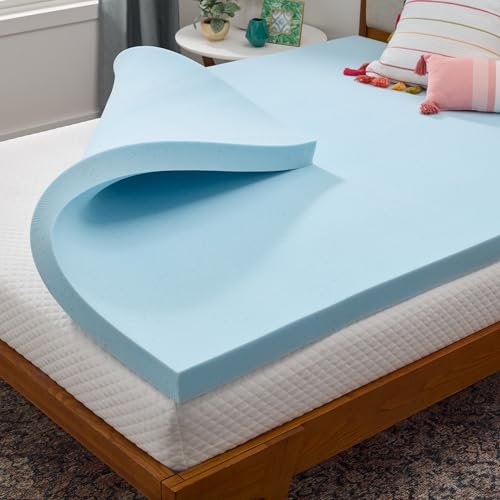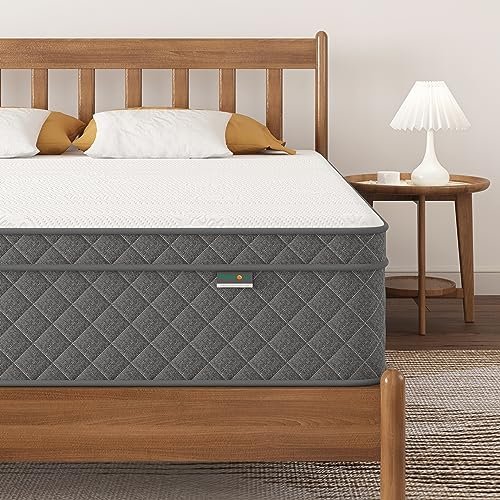
Is an Adjustable Bed Frame Worth It? Your Ultimate Guide to Better Sleep and Comfort
Tossing and turning, struggling with back pain, or simply wishing for a more comfortable way to read in bed? You might have stumbled upon the idea of an adjustable bed frame. These innovative sleep systems promise a world of personalized comfort and potential health benefits. But with a higher price tag than traditional frames, the big question looms: is an adjustable bed frame worth it for you?
We’re here to help you navigate the world of adjustable beds, weigh the pros and cons, and decide if this investment in your sleep and well-being makes sense. Get ready to discover if an adjustable bed could be the secret to your best night’s sleep yet!
What Exactly Is An Adjustable Bed Frame?
Before we dive into the “worth it” debate, let’s clarify what we’re talking about. An adjustable bed frame is a motorized base that allows you to elevate different sections of your mattress, typically the head and feet, independently or simultaneously. Think of it as a personalized control center for your sleep and relaxation.
Gone are the days of propping up pillows or awkwardly stacking books. With the press of a button on a remote control, you can effortlessly glide into a multitude of positions, from a gentle recline for reading to a “zero gravity” position designed to relieve pressure on your body. It’s all about customizable comfort right at your fingertips.
The Benefits: Why People Love Adjustable Beds
The appeal of an adjustable bed goes beyond just fancy technology. Many users report significant improvements in their daily comfort and overall well-being. Here’s a closer look at the key advantages:
Health & Wellness Benefits:
- Relief from Back and Neck Pain: This is often the primary reason people consider an adjustable bed. Elevating your head and/or feet can help align your spine in a more natural position, reducing pressure on sensitive areas. For many, finding that perfect contoured support means waking up with less stiffness and discomfort.
- Reduced Snoring and Acid Reflux: By simply elevating your upper body, gravity works in your favor. A slight incline can help keep airways open, potentially minimizing snoring. Similarly, for those who suffer from acid reflux (GERD), elevating the head can prevent stomach acid from traveling back up the esophagus, leading to more peaceful nights.
- Improved Circulation and Reduced Swelling: Elevating your legs above your heart can be incredibly beneficial for circulation, especially for individuals with conditions like edema or restless leg syndrome. It can help reduce swelling in the lower extremities and provide relief from aches and pains.
- Easier Getting In and Out of Bed: For the elderly, individuals recovering from surgery, or those with mobility challenges, an adjustable bed can be a game-changer. The ability to raise the head or foot can make entering and exiting the bed significantly easier and safer, reducing strain on joints.
Lifestyle & Comfort Enhancements:
- Enhanced Relaxation and Leisure Activities: Imagine reading a book, watching your favorite show, or working on your laptop in perfectly supported comfort. No more cricked necks or sore backs from leaning against headboards. An adjustable bed transforms your bedroom into a true sanctuary for relaxation.
- Customizable Positions for Optimal Comfort: Beyond the basic head and foot elevation, many adjustable frames offer pre-set positions like “zero gravity” (designed to mimic the feeling of weightlessness, reducing pressure on your entire body) or memory settings to save your favorite positions. This means personalized comfort tailored precisely to your preferences.
- Accommodating Partners with Different Needs: If you share a bed, a split adjustable king or queen frame allows each side to operate independently. This means you and your partner can enjoy different sleep or lounge positions without compromising each other’s comfort – a true relationship saver!
Is an Adjustable Bed Frame Right for YOU? A Self-Assessment
Now that you know the benefits, let’s help you decide if an adjustable bed aligns with your specific needs.
Who Benefits Most from an Adjustable Bed?
- Individuals with Chronic Pain: If you regularly experience back pain, neck pain, sciatica, arthritis, or fibromyalgia, the ability to fine-tune your sleeping position can offer significant relief.
- Snorers or Sleep Apnea Sufferers: While not a cure, elevating the head can help alleviate symptoms by keeping airways open.
- Those with Acid Reflux (GERD): Consistent elevation can prevent nighttime heartburn.
- Pregnant Women: Finding a comfortable position during pregnancy can be challenging. An adjustable bed offers various supportive options.
- Elderly or People with Mobility Issues: The assistance in getting in and out of bed, along with pressure relief, is invaluable.
- Anyone Who Loves to Read, Watch TV, or Work in Bed: Elevate your leisure time to new levels of comfort.
- People Seeking Personalized Comfort and Better Sleep: If you prioritize quality sleep and enjoy customizing your environment, an adjustable bed is a strong contender.
Considerations Before Making the Investment:
While the benefits are compelling, it’s important to consider potential drawbacks:
- Cost: Adjustable bed frames are generally a larger initial investment than traditional bed frames.
- Mattress Compatibility: This is crucial! Not all mattresses work with adjustable frames. You’ll need a flexible mattress like memory foam, latex, or certain hybrid mattresses. Your traditional innerspring mattress likely won’t be suitable.
- Weight and Bulk: Adjustable frames are heavier and less portable than standard frames. Once it’s in place, it tends to stay there.
- Noise: While modern motors are quiet, there might be a subtle whirring sound as the bed adjusts.
- Aesthetics: Some people prefer a more traditional bed frame look. However, many modern adjustable bases are designed to fit into existing bed frames or have sleek, standalone designs.
Step-by-Step: How to Choose the Right Adjustable Bed Frame (Without the Overwhelm!)
Decided an adjustable bed might be for you? Great! Here’s how to approach the buying process wisely:
Step 1: Assess Your Needs and Budget.
- Identify your primary reasons: Are you seeking pain relief? Snore reduction? Enhanced comfort for leisure? Knowing this will help prioritize features.
- Set a realistic budget: Adjustable frames range widely in price based on features. Decide what you’re comfortable investing. Remember to factor in a new mattress if yours isn’t compatible.
Step 2: Check Mattress Compatibility.
- This is the most critical step! If you plan to keep your existing mattress, confirm it’s designed for an adjustable base. Most memory foam, latex, and some hybrid mattresses are compatible. Traditional innerspring mattresses are generally not.
- If you need a new mattress, budget for it and consider purchasing the frame and mattress as a package (though avoid specific product suggestions).
Step 3: Identify Key Features You Want.
- Basic vs. Advanced: Do you just need head and foot elevation, or are you looking for extras like massage functions, “zero gravity” pre-sets, USB charging ports, under-bed lighting, or wall-hugging technology (which keeps your nightstand accessible)?
- Remote Control: Some offer wireless remotes, others wired. Look for user-friendly designs.
- Split Options: If sharing a bed, consider a split king or queen for individual control.
Step 4: Consider Size and Space.
- Measure your room: Ensure the chosen size (Twin, Twin XL, Full, Queen, King, Split King) will fit comfortably.
- Account for clearance: Adjustable beds require a bit of space around them to operate smoothly, especially if they have wall-hugging features.
Step 5: Research Warranties and Return Policies.
- An adjustable bed is a significant purchase. A robust warranty (especially on the motor and frame) is essential.
- Understand the return policy before you buy. Can you try it out for a certain period? Are there restocking fees? This protects your investment.
Tips for Getting the Most Out of Your Adjustable Bed
Once you’ve made the leap, here’s how to maximize your new adjustable bed experience:
- Experiment with Positions: Don’t just stick to one setting. Spend time in different positions for reading, watching TV, and especially sleeping. You might discover a “sweet spot” you never knew existed.
- Use Preset Options: If your frame has “zero gravity” or other pre-programmed settings, try them out! They’re designed to optimize comfort and pressure relief.
- Integrate into Your Routine: Make it part of your unwinding ritual. Elevate your head slightly for a few minutes before sleep, or use it for comfortable morning stretching.
- Maintain Your Mattress: Even with an adjustable base, rotate your mattress periodically (if recommended by the manufacturer) to ensure even wear and longevity.
- Keep Your Remote Handy: Place it on your nightstand or in a convenient pocket/holder to avoid fumbling in the dark.
Common Mistakes to Avoid When Buying an Adjustable Bed
Don’t let these common pitfalls derail your journey to better sleep!
- Not Checking Mattress Compatibility: This is the biggest mistake. An incompatible mattress can damage both the mattress and the frame, and void warranties. Always confirm compatibility!
- Ignoring Warranty and Return Policies: A cheap frame with no warranty could lead to expensive repairs down the line. Always read the fine print.
- Buying Solely Based on Price: While budget is important, prioritizing a very low price over features that address your specific needs might lead to regret. Invest in the features that will truly improve your comfort and health.
- Not Measuring Your Space: An adjustable bed is a substantial piece of furniture. Make sure it fits not only in your room but also through doorways and stairwells during delivery.
- Not Giving Yourself Time to Adjust: Just like any new mattress, it can take a few nights or even a couple of weeks to fully adjust to sleeping on an adjustable bed. Be patient and experiment.
The Final Verdict: Is an Adjustable Bed Frame Worth It?
Ultimately, the question of whether an adjustable bed frame is worth it comes down to your individual needs, lifestyle, and budget.
If you’re seeking significant relief from chronic pain, improved sleep quality due to snoring or acid reflux, enhanced comfort for leisure activities, or assistance with mobility, then the investment in an adjustable bed frame can be profoundly worthwhile. It’s not just a bed; it’s a tool for better health, comfort, and well-being.
However, if your current sleep is generally problem-free, and you rarely use your bed for anything other than sleeping, a traditional frame might suffice.
Consider the potential benefits against the cost, assess your mattress compatibility, and take the time to research features that truly matter to you. By doing so, you can make an informed decision and potentially unlock a whole new level of comfort and restorative sleep! Your best sleep could be just a button press away.
Frequently Asked Questions(FAQ)
Q. What exactly is an adjustable bed frame?
A. An adjustable bed frame is a motorized base that allows you to elevate different sections of your mattress, typically the head and feet, independently or in combination. It provides customizable sleep positions beyond just lying flat.
Q. What are the primary benefits of owning an adjustable bed frame?
A. Key benefits include improved comfort for reading or watching TV, potential relief from back pain, reduced snoring, better circulation, aid for acid reflux, and a generally enhanced sleep experience due to personalized positioning.
Q. Can an adjustable bed frame truly help with back pain or joint discomfort?
A. Yes, many users find significant relief. By elevating the head and/or feet, an adjustable bed can reduce pressure on the lower back, promote spinal alignment, and distribute body weight more evenly, alleviating discomfort in the back, hips, and knees.
Q. Is an adjustable bed frame effective for reducing snoring or sleep apnea symptoms?
A. For many, yes. Elevating the head slightly can help open airways, making breathing easier and often reducing or eliminating snoring. While not a cure for sleep apnea, it can provide some relief for milder cases by improving airflow.
Q. Do I need a special mattress to use with an adjustable bed frame?
A. Yes, you do need a compatible mattress. Most memory foam, latex, and many hybrid mattresses are designed to be flexible enough for adjustable bases. Traditional innerspring mattresses typically are not suitable as their coils can be damaged by constant flexing. Always check the mattress manufacturer’s compatibility.
Q. Are adjustable bed frames very expensive, and are they worth the investment?
A. Prices vary widely based on features, brand, and size, ranging from several hundred to several thousand dollars. While they are a significant investment, many users find the health, comfort, and lifestyle benefits (like better sleep, pain relief, and improved daily function) make them well worth the cost over their lifespan.
Q. What features should I look for when considering an adjustable bed frame?
A. Important features include head and foot articulation (some offer lumbar support too), wireless remote control (or app control), preset memory positions, massage functions, USB charging ports, under-bed lighting, a wall-hugging design (keeps you close to your nightstand), and the overall noise level of the motors.
Q. How long do adjustable bed frames typically last, and what’s their warranty like?
A. A high-quality adjustable bed frame can last 10 to 15 years or more with proper care. Warranties vary, often covering the frame for 10-25 years, while electrical components and motors typically have shorter warranties (e.g., 1-5 years).
Q. Can an adjustable bed frame fit inside my existing bed frame or with my headboard?
A. Many adjustable bed frames are designed to be “zero-clearance” or “drop-in” models that can sit directly inside an existing decorative bed frame. Most also come with brackets (or offer them as an add-on) to attach to a standard headboard. Footboard compatibility can be trickier, so always check dimensions and mounting options.
Q. Are there any significant downsides or drawbacks to owning an adjustable bed frame?
A. Potential downsides include their higher initial cost compared to a traditional flat frame, increased weight and bulk which can make moving them challenging, the requirement for a compatible mattress, and some models might have limited aesthetic integration with very specific bedroom designs.
Related Articles
7 Top Full Size Bed Frames: What is the Dimensions of a Full Size Bed Frame and More!
Getting a good night’s sleep often starts with the right bed, and for many, a full-size bed is the perfect sweet spot between a twin and a queen…
How Much Is a King Size Sleep Number Smart Bed
How Much Is a King Size Sleep Number Smart Bed? Your Guide to Understanding the Investment Recommended Product: Select Comfort Air Bed Chamber for Sle…
How Much Does a Sleep Number 360 Smart Bed Cost
How Much Does a Sleep Number 360 Smart Bed Cost? Recommended Product: Sven & Son Classic Adjustable Bed Base — head and foot lift, massage, under-…



